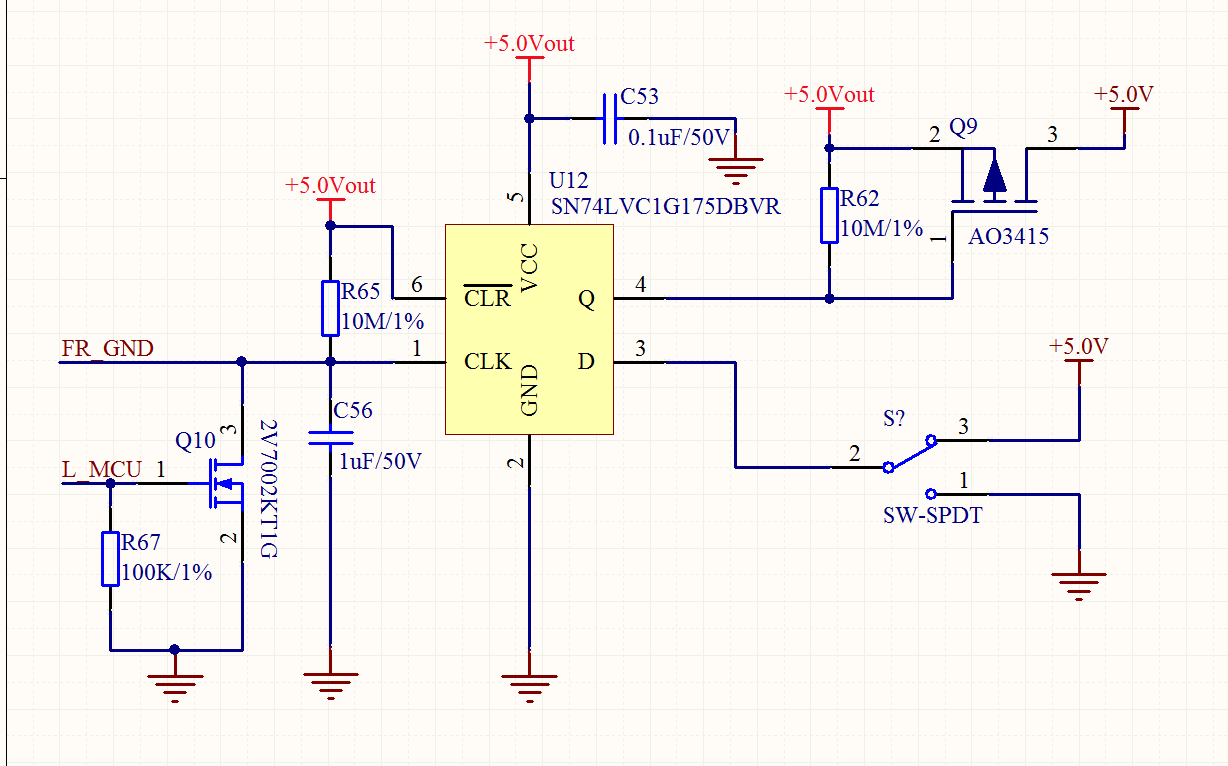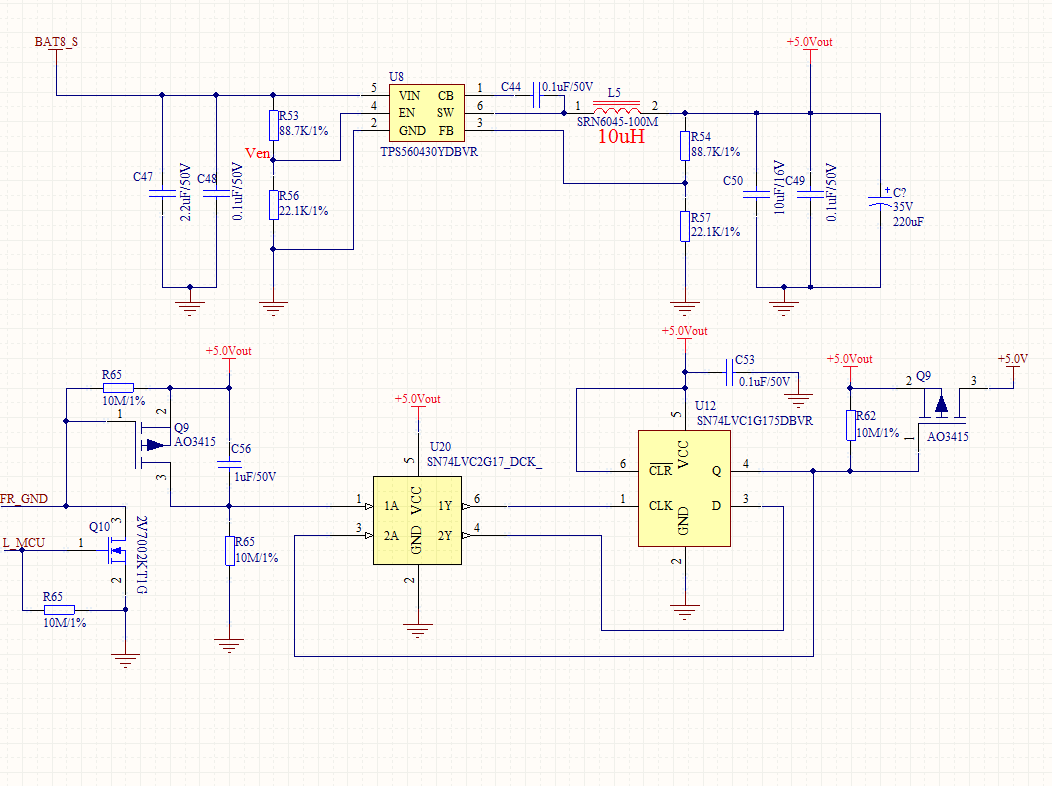Other Parts Discussed in Thread: SN74HCS74, SN74HCS74-Q1, SN74LVC2G17, , SN74LVC2G14
The target is using a D type Flip-Folp to make a rising edge controled power supply.
Here is the Sehematic.
The first status is FR_GND pulled high by R65, Q stay in L so Q9(P mos) close provide 5V (H ) to D.
by ground FR_GND and release this net, we will have a rising edge on CLK of U12 which will turn Q from L to H(the status of D), and then ,the P-mos will open and D turns to L for next operation.
by ground FR_GND and relase again, another rising edge on CLK of U12 will turn Q from H to L.
has try this sehematic on multisim simulation and everything just looks fine.
By worried about the possible noise on D of U12, had try to put fillter on control and feedback loop as follow
But the fillter does not help.
For clear, i have try to control the D of U12 maunally like the schematic below.
By switching the S? manually to control the status of D, the Q are following the status of D when CLK rising up.
Any suggestion or is there something which can be use to instead of this schematic?







